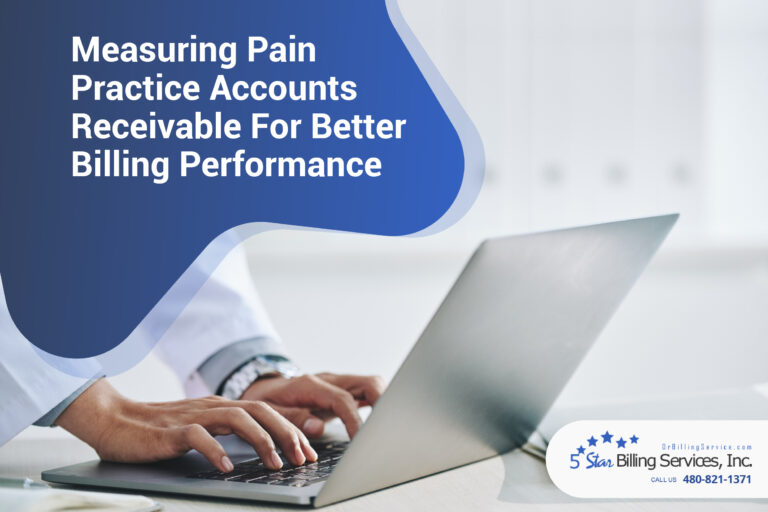Measuring Pain Practice Accounts Receivable For Better Billing Performance
 March 19, 2021
March 19, 2021How to Measure Accounts Receivable
You can use the following methods in measuring the quality of the accounts receivables of your Pain Management Practice:
1. Day’s Sales Outstanding (DSO)
The day’s sales outstanding (DSO) ratio is a simple way to assess the quality of accounts receivables. It’s determined by dividing average accounts receivables by revenue and multiplying by 365. The DSO ratio indicates how long it takes practice to turn its receivables into cash on average. It is often easier to use than the accounts receivable-to-sales ratio and the accounts receivable turnover ratio because it is in an intuitive unit of calculation (days).
2. Accounts Receivable Turnover Ratio
Analyzing a practice’s accounts receivables turnover ratio is another way to assess the quality of its receivables. It’s calculated by dividing a period’s sales by the average accounts receivables balance during that period.
The accounts receivable turnover ratio is a metric that measures how quickly a company can convert its receivables into cash. A high ratio usually indicates that a practice’s accounts receivables are of higher quality, as it reveals that receivables are being converted to cash more quickly.
Because a company can receive cash from its accounts receivables faster, a shorter DSO indicates that the accounts receivables quality is higher. While a high DSO ratio (more than 90 days) can indicate that receivables will become “stale” and may not be collected, it also indicates the poor quality of practice earnings.
3. Accounts Receivable-to-Sales Ratio
The accounts receivable-to-sales ratio is a simple way to assess the quality of your receivables. The ratio is calculated by dividing accounts receivable at a given point in time by sales over time. It shows what percentage of a practice’s sales are still owed to them. With a few tweaks, it’s the inverse of the accounts receivable turnover ratio. It’s the exact opposite of the accounts receivable turnover ratio, but with a few tweaks.
Since it is not guaranteed that all accounts receivable can be collected, a high accounts receivable-to-sales ratio may indicate a riskier practice with a poor quality of accounts receivable.
What Period Should be Analyzed for the Formulas?
While opinions differ on this, we think it is prudent to use a period that is appropriate for your specialty and practice and then study this measure over time to determine its pattern for your work. We suggest a time limit of the last 90 days. Divide your Current A/R Balance with the quotient of Total Billed Charges over the past 90 days.
How to Determine if the Result is Good or Bad?
The lower the A/R Days, the better it is. This means you’ll have fewer billed payments awaiting billing and adjudication. The A/R Days benchmark varies by specialty and can be influenced by practice-specific factors like treatment mix, payer mix, and internal policies. Consider the following scenarios:
Insurance providers can take longer to assess and pay claims for a specialty practice that conducts complex procedures with high average payout rates, such as Interventional Pain, resulting in a longer average period to adjudicate and pay the practice’s claims and a higher A/R Days measure.
Since pain practices are subject to denials due to inadequate prior authorization, medical necessity, or other obstacles, these factors cause claims adjudication delays, resulting in higher average A/R Days. Pain practices need to be aggressive about collecting time-of-service payments from patients at the front desk because these balances can take time to collect which can cause A/R Days to rise.
What other Factors Need to be Considered in Evaluating A/R Days?
The A/R balance of practice often includes both debit and credit balances, which means that although the majority of the balances are debited to be paid to the practice, others are credits showing possible overpayments that may be refunded. Significant credit balances in the total A/R balance will outweigh large debit balances, resulting in a deceptive A/R Days metric. Specialty practices that have higher than average credit balances can take this into account when calculating A/R Days. The argument is that when determining whether your A/R day’s number is positive or bad, you must understand the content and essence of the statements that make up your A/R Balances.
Tap Into Our Expertise
At 5 Star Billing Billing Services Inc, we offer the highest level of performance for high-quality medical billing. Let us help you during these dire times.

